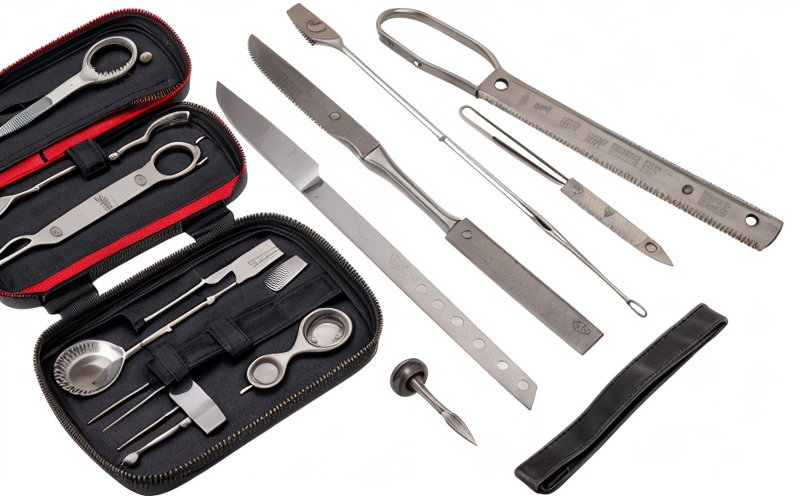Precision and Accuracy Testing in Laparoscopic Instruments
The precision and accuracy testing of laparoscopic instruments are critical to ensuring patient safety and surgical success. These tests evaluate the reliability, repeatability, and reproducibility of the tools used during minimally invasive surgeries. The performance of these instruments directly impacts the surgeon's ability to perform delicate procedures with precision.
Laparoscopic surgery requires specialized instruments designed for precise manipulation within small incisions. The accuracy of these tools can vary based on numerous factors, including manufacturing processes, material properties, and environmental conditions during use. Therefore, regular testing is essential to maintain quality standards and ensure compliance with regulatory requirements such as ISO 13485.
Our precision and accuracy testing service uses state-of-the-art equipment and methodologies tailored specifically for surgical instruments. This includes computerized systems capable of measuring the smallest deviations in tool performance, ensuring that any discrepancies are detected promptly. The process involves multiple steps to assess different aspects of instrument functionality:
- Calibration of measurement tools
- Repeatability and reproducibility testing
- Evaluation under controlled conditions
- Analysis of operational parameters
The results of these tests provide valuable insights into the instrument's performance, helping manufacturers identify areas for improvement. For quality managers and compliance officers, this data is crucial for maintaining product integrity and ensuring adherence to international standards like ISO 14971.
R&D engineers benefit from detailed reports on how design changes affect instrument precision. This information can guide future iterations of the tools, enhancing their capabilities without compromising safety or efficacy. Procurement teams also find value in this testing as it supports informed decisions about supplier selection and contract negotiation.
Scope and Methodology
The scope of our precision and accuracy testing covers a wide range of laparoscopic instruments, including but not limited to forceps, scissors, graspers, and dissectors. Each instrument undergoes rigorous evaluation using advanced technological tools that simulate real-world surgical conditions.
- Instrument Preparation: Instruments are cleaned according to manufacturer guidelines and calibrated before testing begins.
- Testing Conditions: Tests are conducted under controlled environmental conditions to minimize external variables.
- Data Collection: Continuous data is recorded throughout each test run for comprehensive analysis.
The methodology ensures that every instrument meets the highest standards of precision and accuracy, which are essential for effective surgical outcomes. Compliance officers can rely on these results to verify product compliance with relevant regulations.
Benefits
- Increased Patient Safety: Ensuring that laparoscopic instruments perform accurately minimizes the risk of surgical errors and complications.
- Enhanced Product Quality: Regular testing helps maintain consistent product quality across all units produced by a manufacturer.
- Regulatory Compliance: Meeting rigorous standards ensures that products can be marketed globally without issue.
Besides these direct benefits, precision and accuracy testing also contributes to brand reputation by demonstrating commitment to quality. This is particularly important in the medical device industry where trust between manufacturers and healthcare providers is paramount.
International Acceptance and Recognition
- ISO Compliance: Our testing adheres to ISO standards, ensuring broad acceptance across countries that recognize these norms.
- IEC Standards: Instruments tested meet IEC requirements for electrical safety in medical devices.
The global nature of the medical device industry means that products must meet stringent quality and safety criteria. Our testing aligns with international standards, making it easier for manufacturers to penetrate various markets without encountering regulatory barriers. This also facilitates smoother interactions between healthcare providers and suppliers, fostering a more efficient supply chain.





